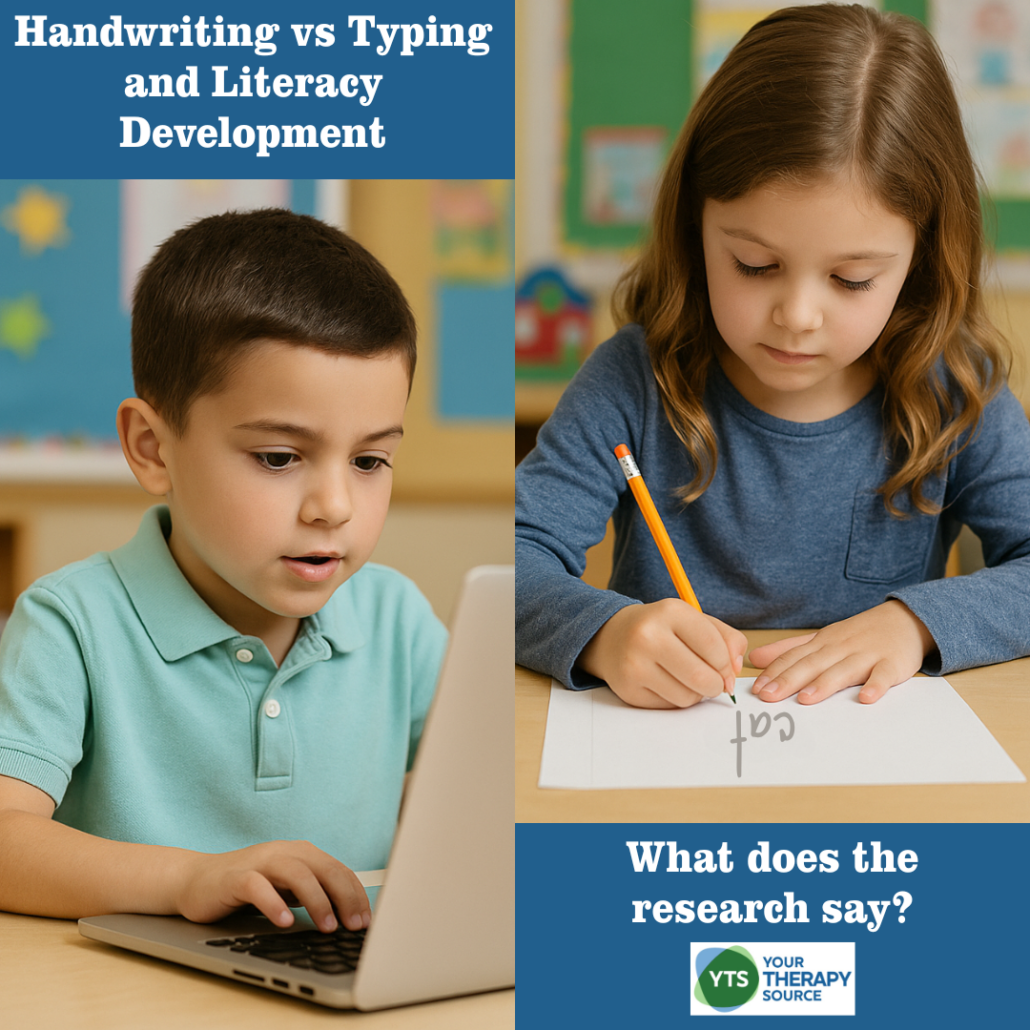Handwriting and Literacy Development
Handwriting and literacy development are closely connected, according to recent research that reveals how writing by hand helps young children learn to read more effectively than typing. As digital tools become more common in classrooms, this new evidence highlights the importance of keeping handwriting a core part of early education.
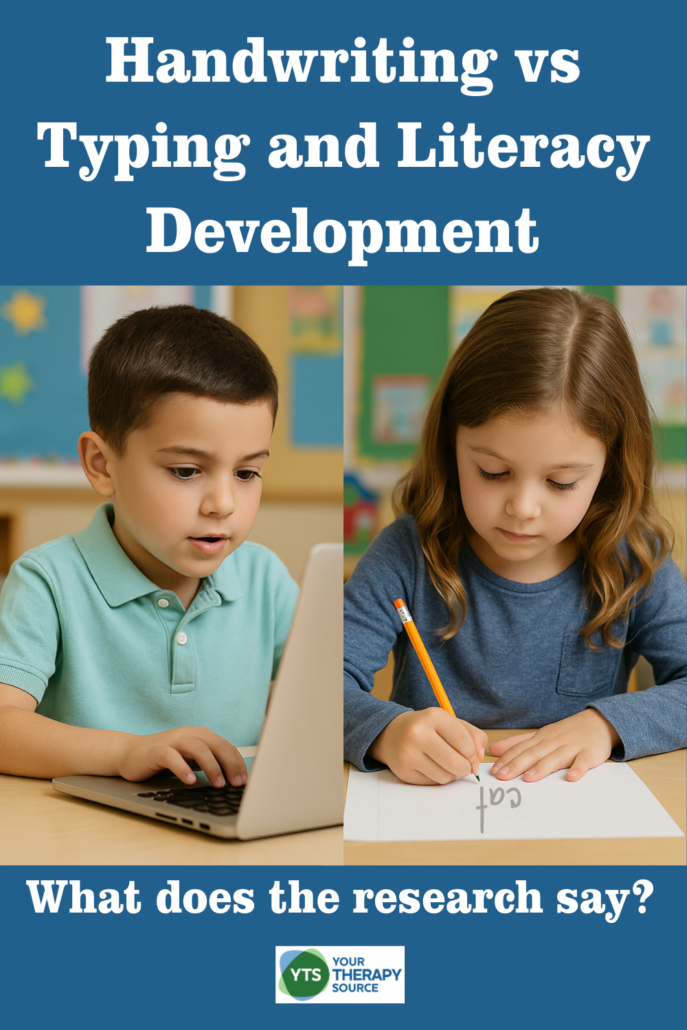
Why Handwriting Matters More Than Typing
Researchers in Spain studied 50 kindergarten-aged children who had not yet learned to read. In this study, 50 preschool children who had not yet learned to read were taught nine letters and 16 made-up words (pseudowords) using four different methods:
- copying the letters and words by hand
- tracing the letters and words
- typing them using different computer fonts
- and typing them with just one consistent font
After the learning sessions, the children completed follow-up tests that assessed how well they could name the letters and words, write them, and recognize them visually. The results were clear. Children who practiced handwriting, either by copying or tracing, did much better on reading and spelling tasks than children who typed.
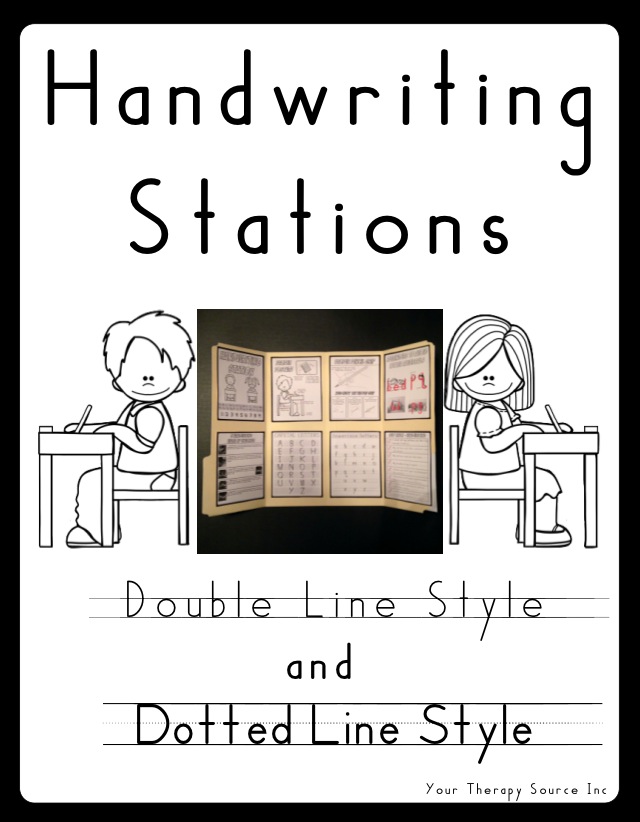
Handwriting Stations
What the Study Showed about Handwriting and Literacy Development:
- Children who handwrote letters were better at remembering both the shapes and the sounds of those letters.
- Typing, even with varied fonts, did not help children build strong letter–sound connections.
- Copying letters by hand led to better results than tracing, especially in tasks that required remembering and writing words.
- Handwriting improved not only letter recognition but also word reading, spelling, and writing from memory.
How Handwriting Helps the Brain
Handwriting supports learning in ways that typing does not. Writing letters by hand involves motor planning, fine motor control, and attention to shape and detail. These actions create stronger brain connections that support literacy development.
Brain scans show that handwriting activates more areas of the brain than typing. When children write letters themselves, they use multiple senses—seeing, feeling, and moving—which strengthens their memory and understanding of how letters and sounds work together.
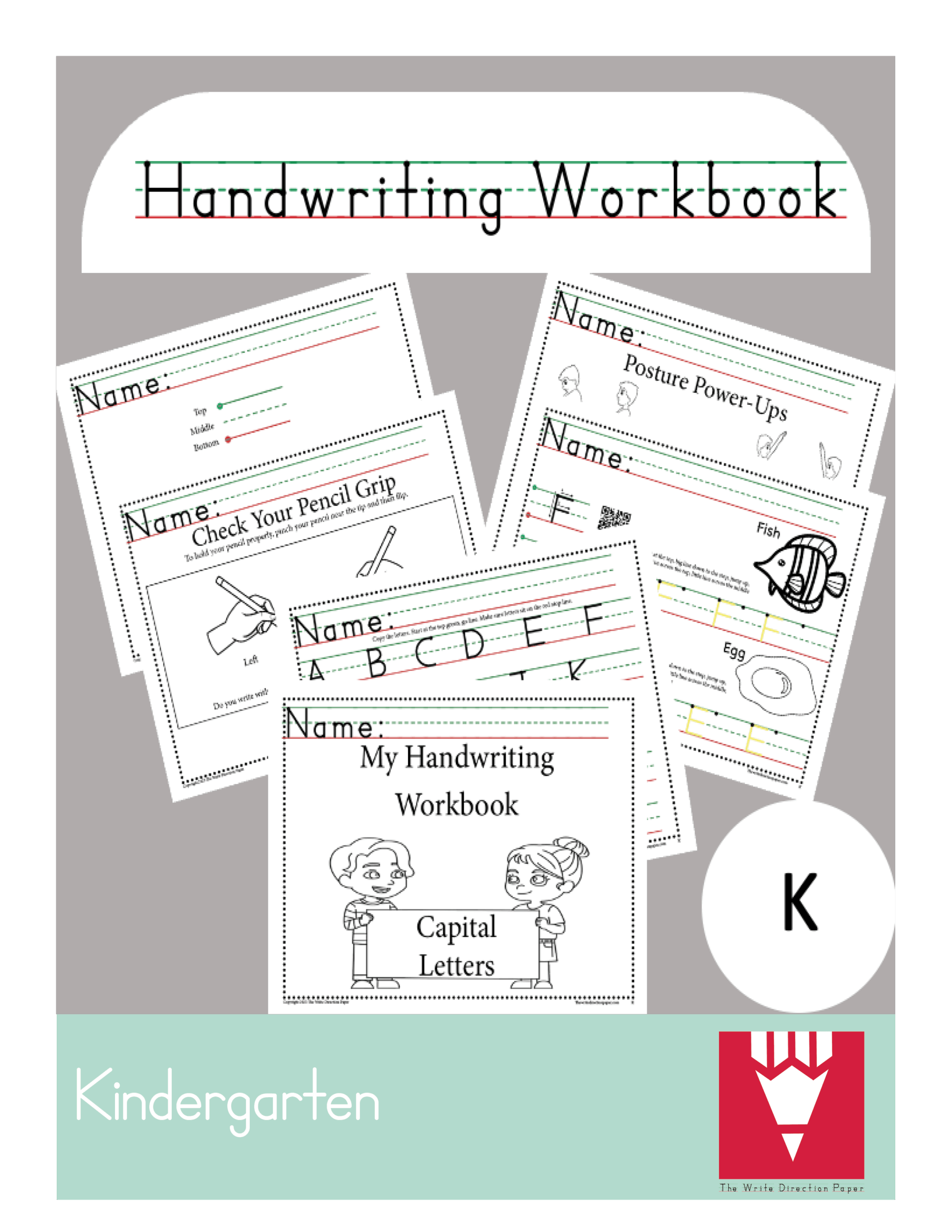
WRITE DIRECTION PAPER™ CAPITAL LETTERS KINDERGARTEN WORKBOOK
From Letters to Words: A Foundation for Reading
Learning to read depends on two key skills: alphabetic knowledge and orthographic knowledge. Alphabetic knowledge is the ability to connect letters with sounds. Orthographic knowledge is the ability to recognize familiar letter patterns and words.
In this study, children who learned through handwriting were better at both:
- Naming and writing letters
- Reading aloud new words
- Spelling and identifying words from memory
These early skills set the stage for fluent reading and writing in later grades.
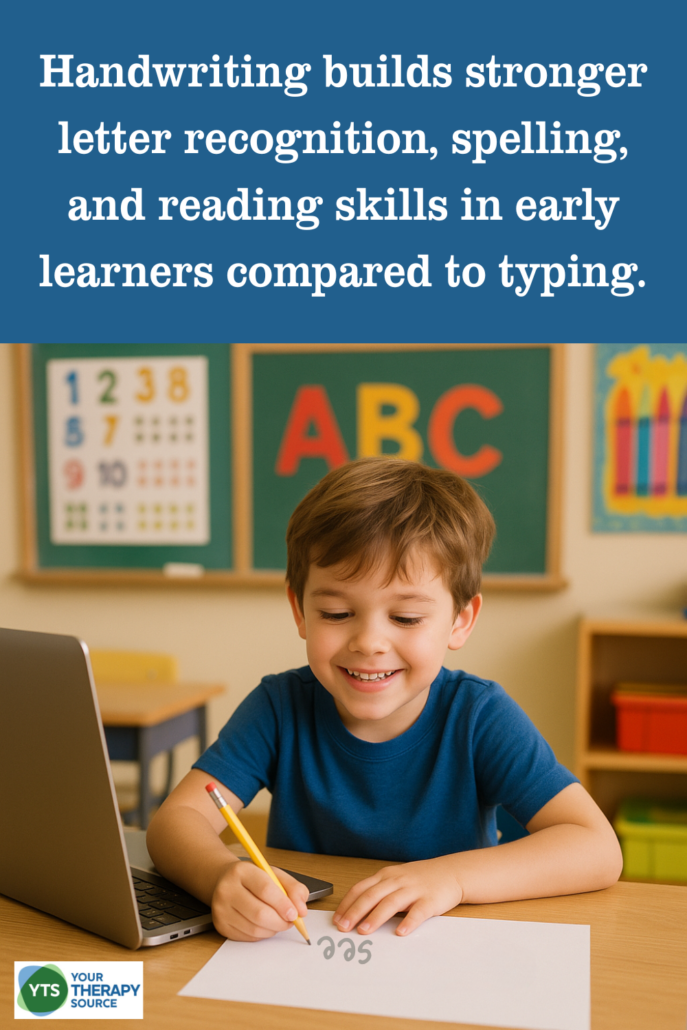
Action steps for educators, therapists, and parents
In the classroom:
- Schedule daily handwriting practice in early grades
- Combine handwriting with phonics activities to strengthen letter–sound connections
- Limit the use of typing tools during early reading instruction
In occupational therapy sessions:
- Include handwriting practice as part of early literacy goals
- Encourage hand-copying rather than tracing whenever possible
- Support teachers with ideas for reinforcing writing skills across the school day
At home:
- Set up a writing-friendly area with paper, pencils, and letter games
- Encourage writing during everyday activities such as making lists or labeling items
- Use fun strategies like writing letters in sand, shaving cream, or with finger paints
What about Digital Tools?
Digital devices can be helpful in many ways, but they should not replace handwriting in the early stages of reading development. Typing does not offer the same motor and memory benefits as writing by hand. Once children have a strong foundation in reading and spelling, digital tools can be used to build on those skills, not take their place.
Handwriting and literacy development go hand in hand. Writing by hand helps children build essential skills for reading and spelling by engaging their brains in deeper and more effective ways. While typing can be useful later on, handwriting should remain a priority in the early years of literacy instruction.
Other Helpful Resources
- Importance of Handwriting for Writing
Explores how handwriting practice supports compositional fluency and strengthens overall writing development. - Why Handwriting Still Matters in a Digital World
Highlights the ongoing benefits of handwriting instruction for reading, spelling, and writing, even in technology-rich classrooms. - Fine Motor Skills, Handwriting, Typing, and Reading: What Does the Research Say?
Examines the connection between fine motor development and literacy, comparing the effects of handwriting and typing. - Handwriting and Intelligence
Shares findings on how forming letters by hand can boost symbol recognition and support cognitive growth. - Handwriting Fluency and Letter Practice
Discusses the role of repeated handwriting practice in developing fluency and improving academic outcomes.
Reference
Ibaibarriaga, G., Acha, J., & Perea, M. (2025). The impact of handwriting and typing practice in children’s letter and word learning: Implications for literacy development. Journal of Experimental Child Psychology, 253, 106195.
